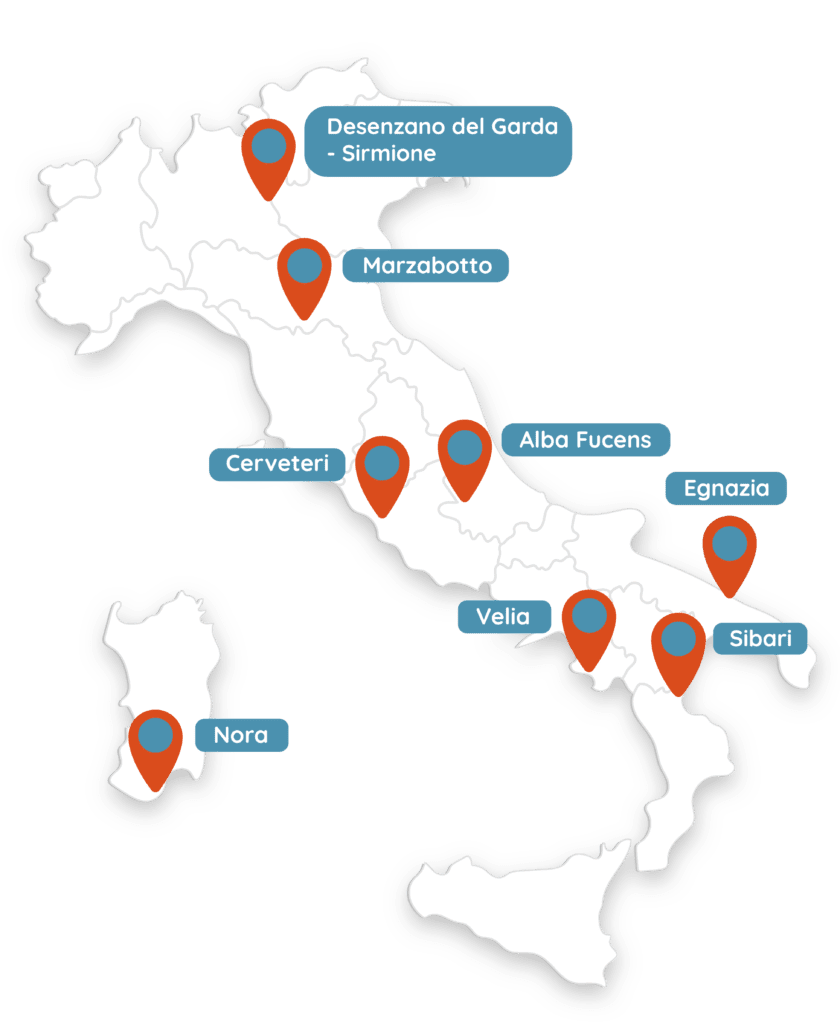Introduction
e-Archeo drafted out from the desire of Ales SpA, after the Ministry of Culture (MiC) specific request, to offer a way of interpreting and experience some archaeological sites with a significant narrative potential.
The common thread that guided e-Archeo’s narrative choices was of illustrating the different types of settlements that developed on the italic territory, due to the presence of various populations and cultures.
Centres founded by the Etruscans, Greeks and Punic Phoenicians were chosen; the story and final destiny of each them was also presented by means of the best preserved monuments, in their current state and in their ancient reconstructive appearance, aimed at restoring the third dimension lost over the centuries.
For the narration, the places of public life (forums, basilicas, temples) and private life (urban dwellings and villas) were chosen, without neglecting the necropolis with tombs and grave goods, a mirror of the beliefs in the afterlife.
The studied chronological period covers more than ten centuries, during which the peninsula became a place of integration, where different traditions were recognised in a single culture.
The archaeological sites
In e-Archeo, the attention has been addressed on 8 Cultural Heritage sites located over the national territory, from North to South:
1. Sirmione and Desenzano – Lombardy
2. Marzabotto – Emilia Romagna
The focus of e-Archeo was to create an integrated and multichannel multimedia enhancement project with transversal solutions for all the sites, that has individual applications for various uses and types of audiences as final outputs.
The current archaeological landscape is represented and narrated as it is today, through digital models and cinematographic videos; the potential ancient landscape is represented through virtual reconstructions. The latter are accompanied by a double layer of content: narrative and scientific. In addition to the photo-realistic renderings associated with the storytelling, the scientific “back end” is presented, which confirm the different reliability levels of the reconstructions, and sources and interpretative processes followed.
The 8 archaeological sites are thereby promoted both scientifically and emotionally, for different target audiences.
e-Archeo concept and backstage
THE WORKING PROCESS 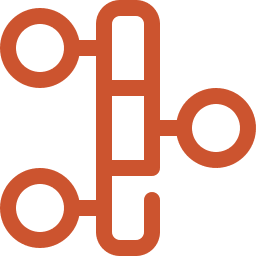
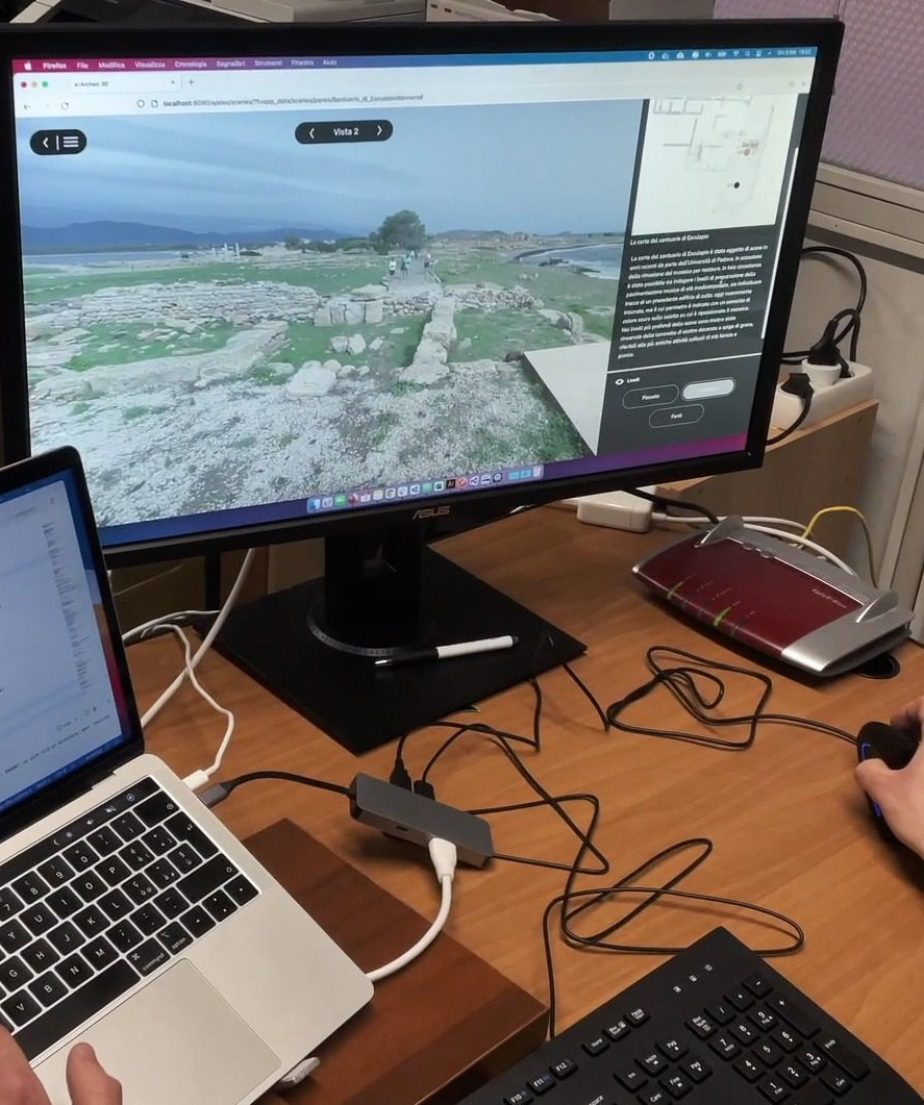
The acquisition and processing of all the scientific data of research and academic groups operating on the single sites, was a valuable preliminary activity. The CNR ISPC coordinated this activity which involved nine Italian universities and the Italian School of Archaeology in Athens.
The scientific data served as a starting point for the study and virtual reconstruction of some environments or areas of the 8t selected sites, entrusted to four specialized companies in the 3D sector.
The virtual reconstructions (based on architectural, landscape, and sometimes urban scales, as well as objects) populated various applications, developed by five Italian creative industries, such as an interactive web platform for exploring the sites and their diachronic reading “e-Archeo 3D“, a podcast that talks about events, people and the uniqueness of the sites “e-Archeo Voci“, a multimedia tactile installation exhibited at the Cerite National Archaeological Museum of Cerveteri, which ensures that everyone can access the reading of the archaeological spaces and its meanings “e-Archeo Tattile“. Moreover, a narrative multimedia installation located at the Archaeological Museum of Sirmione and the Cerite National Archaeological Museum of Cerveteri ” e-Archeo HI-Human Interface“. E.V.O.CA. and RAI produced some videos which introduce the 8 archaeological sites, in which cinematographic sequences of the current archaeological landscape are combined with the related virtual reconstructions.
In this phase, the Sapienza University of Rome, Faculty of History, Design and Restoration of Architecture also took part in the coordination to support the executive production.

The themes on which the creative industries worked for each archeological site were identified by the research institutes according to the availability of archaeological evidences and previous studies that allowed the reconstructive hypotheses. The themes are:
- for Alba Fucens, the landscape and settlement, the southern section of the forum, the basilica, some tabernae on the Via dei Pilastri, the macellum in three different phases
- for Cerveteri, the landscape and settlement, the tomb of Reliefs, the tomb of the Capitals, some tombs of Monte Abatone (tomb of Campana, 645, 642, 73) and some museum objects
- for Desenzano and Sirmione, the landscape, sector A of the villa of Desenzano; the exterior of the villa, the cryptoporticus and the triclinium of Sirmione
- for Egnatia, the sanctuary of Venus, the atrium domus, the market square in the three ages (Messapian, Roman, late-Antiquity); the pre-existing models of the thermal baths of the forum and the port
- for Marzabotto, the entire settlement on a scale of urban detail, House 1 of the Regio IV insula 2, Houses 1-6 of the Regio IV insula 1, the large kiln, the urban sanctuaries and those of the acropolis
- for Nora, the entire settlement on a urban scale of detail, the temple of Asclepius, the house of Favonia, the house with the tetrastyle atrium, the Roman forum, the Roman temple, the paved square with fountain, the Roman theatre, the sea baths, the Phoenician and Punic necropoli
- for Sibari the sanctuary of the eastern deities, the northern and eastern gates
- for Velia some dwellings on the acropolis of the late-archaic age, the Roman-age insula II, the Hellenistic-age insula A.I.2, the fortification of Castelluccio and the Agorà complex
Where possible, a reconstruction of the landscape was also approached, with different degrees of detail depending on the information collected. In some cases, photo-realistic 3D models of reconstructions were also paired with semantic models “Extended Matrix” which indicate the level of reliability of the several reconstructed elements and the interpretative processes behind them.
The collaboration between universities and creative industries in the creation of virtual reconstructions has also made it possible to advance the knowledge and interpretation of some architectural contexts.
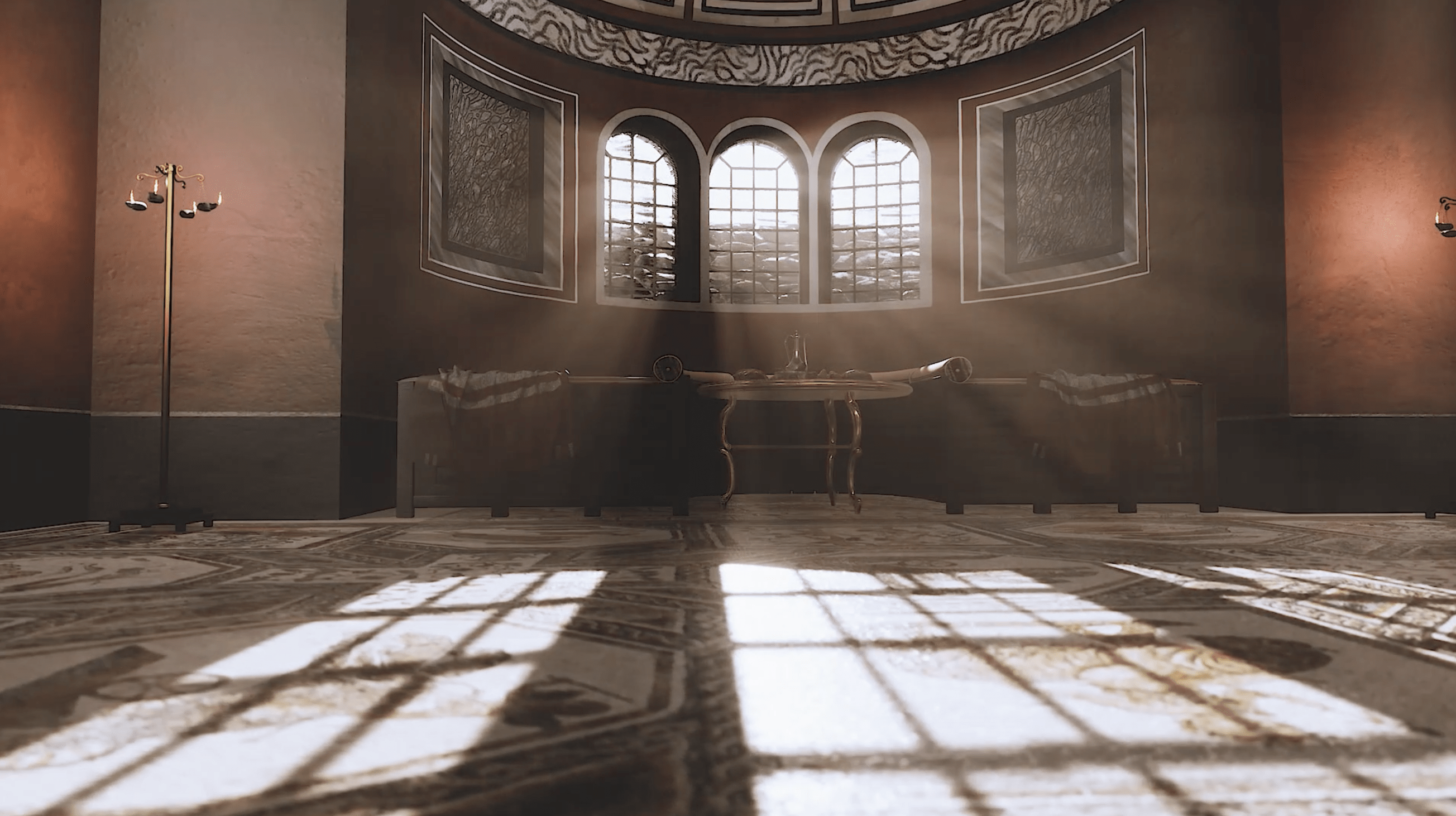
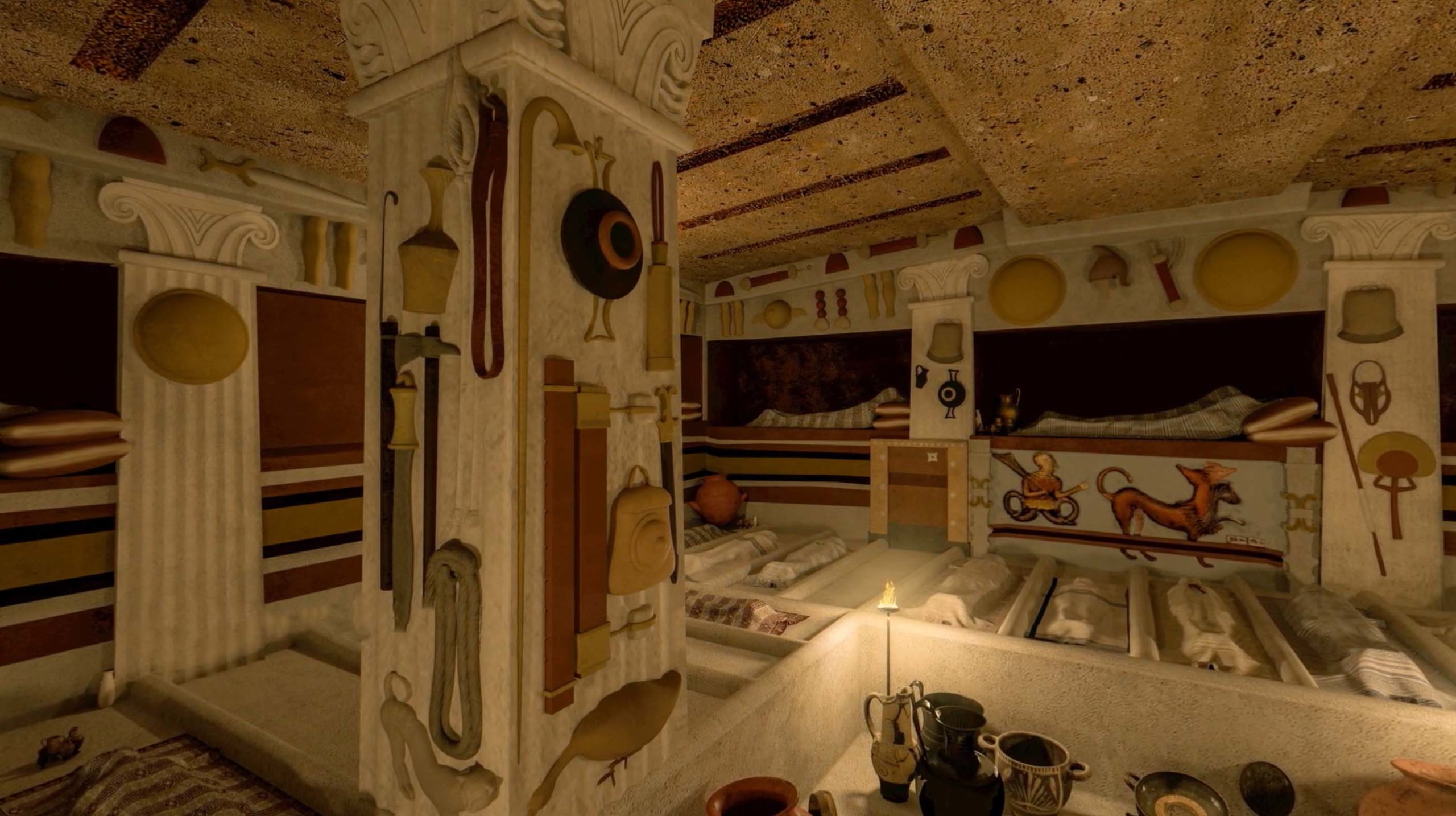
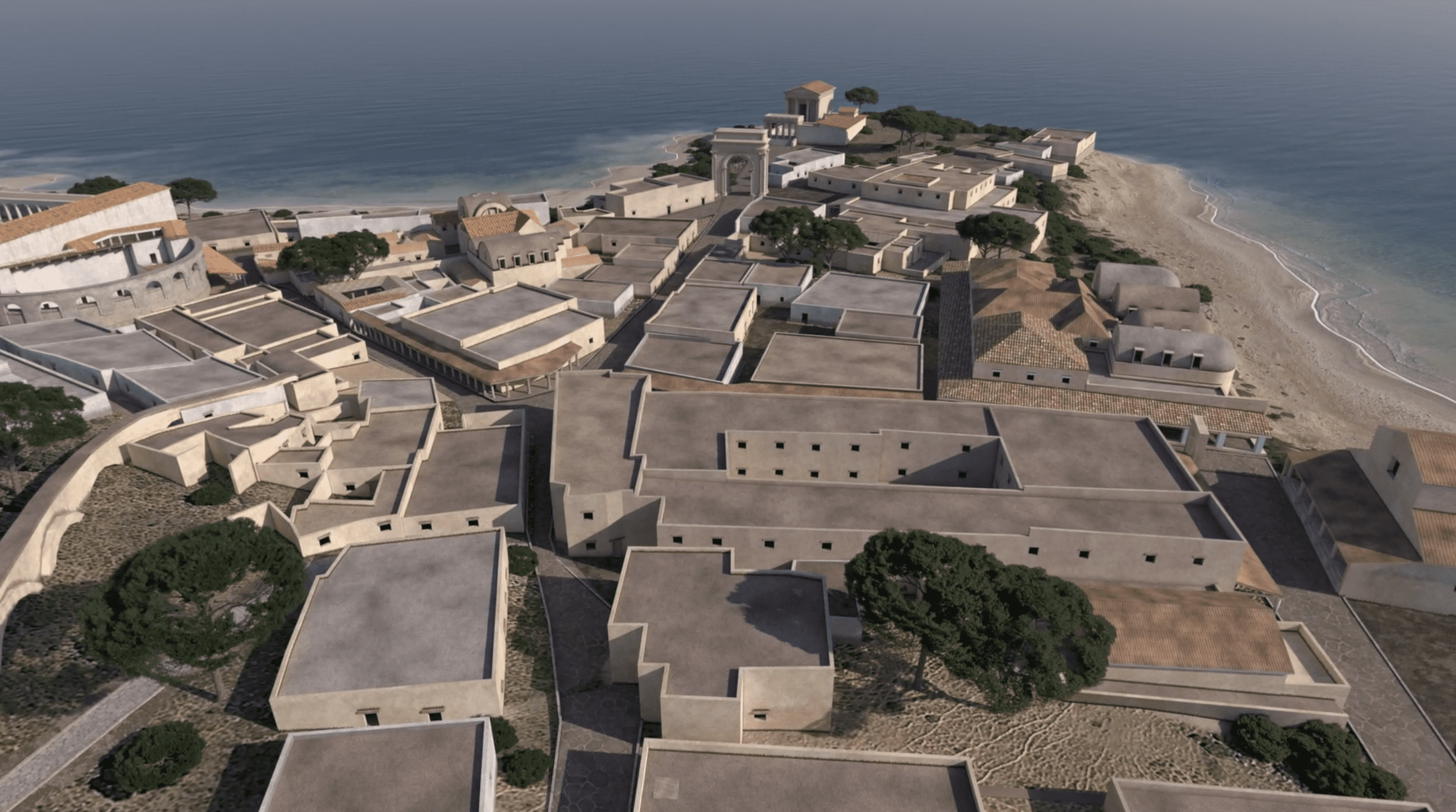
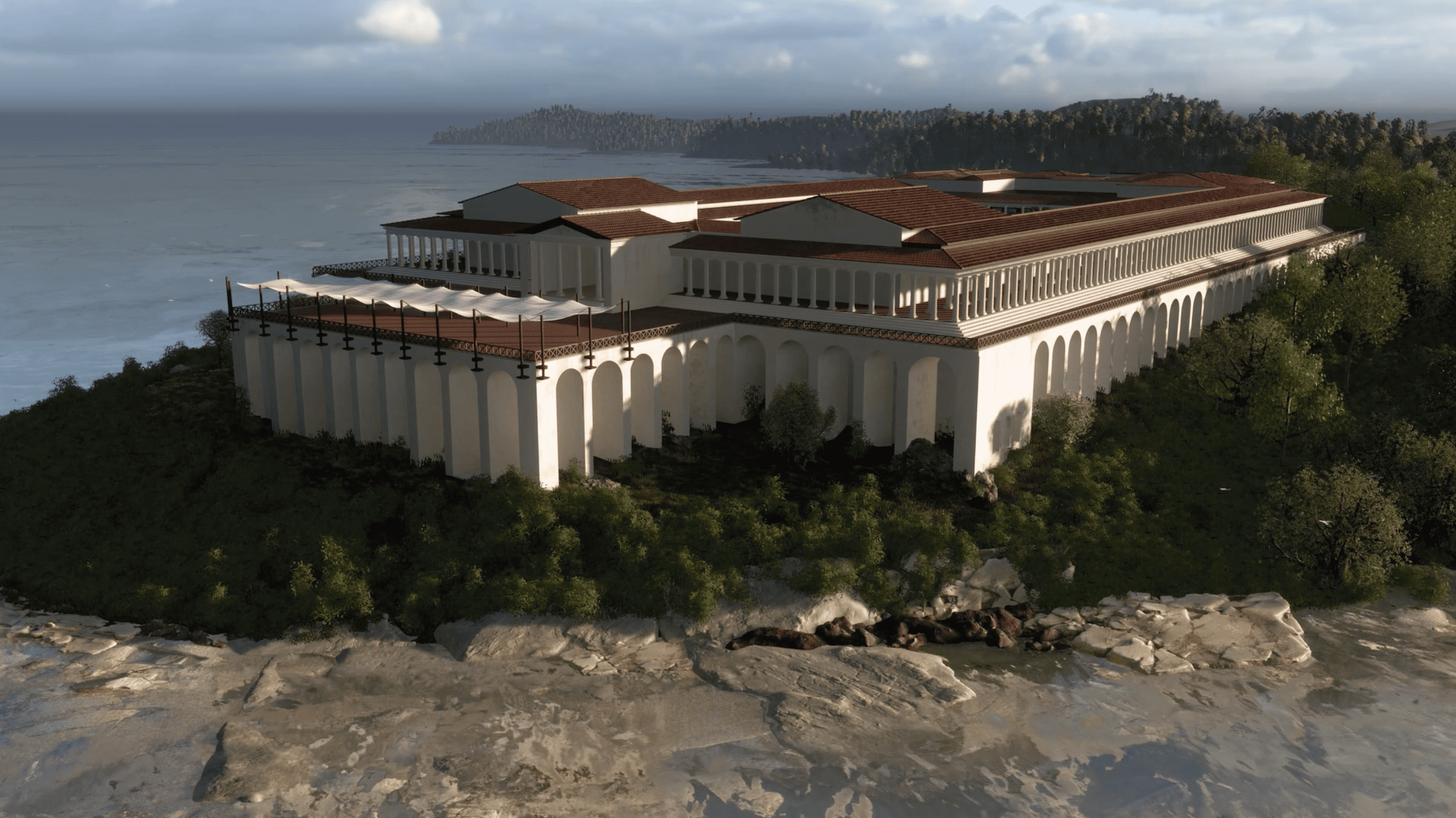
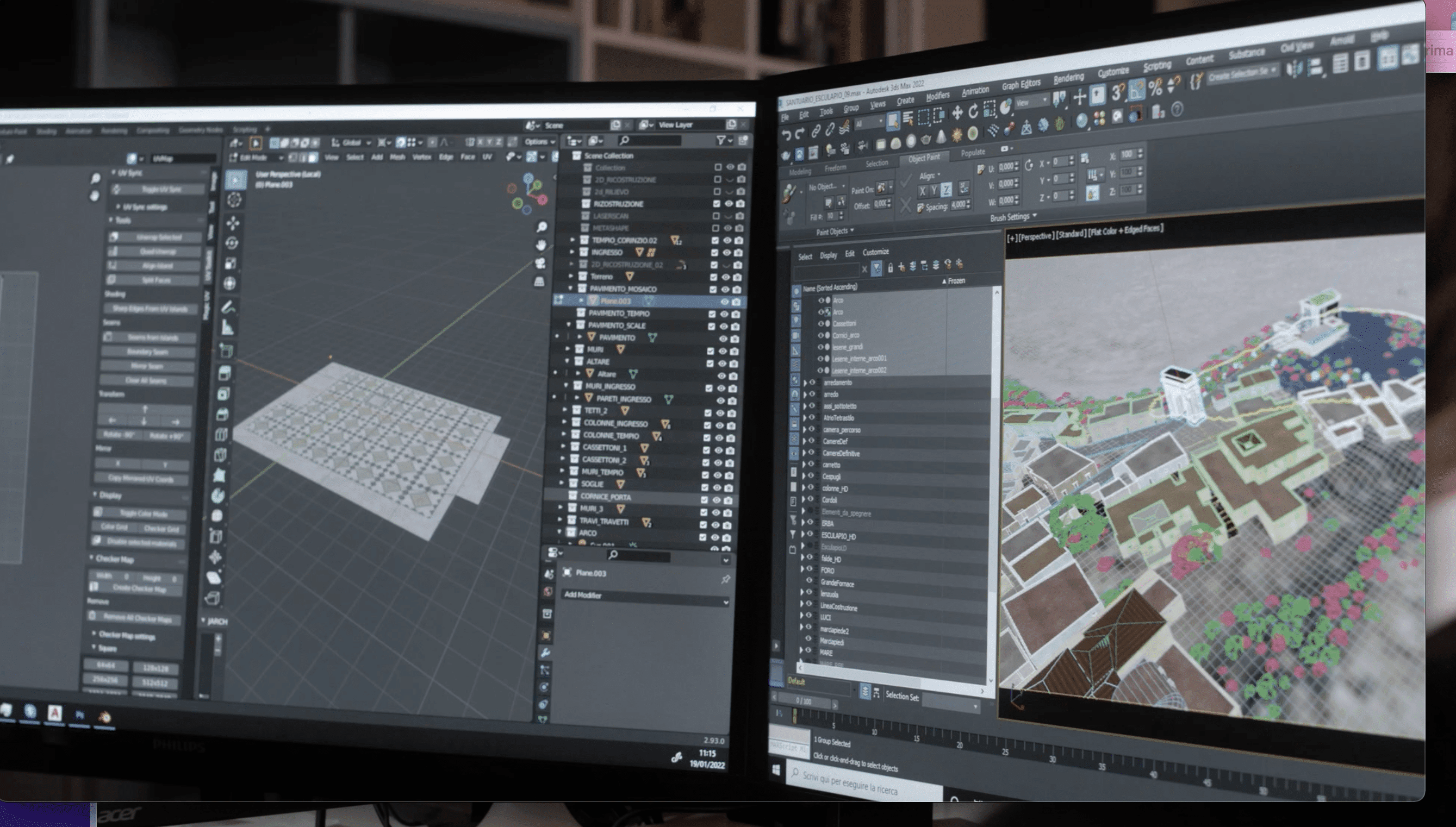

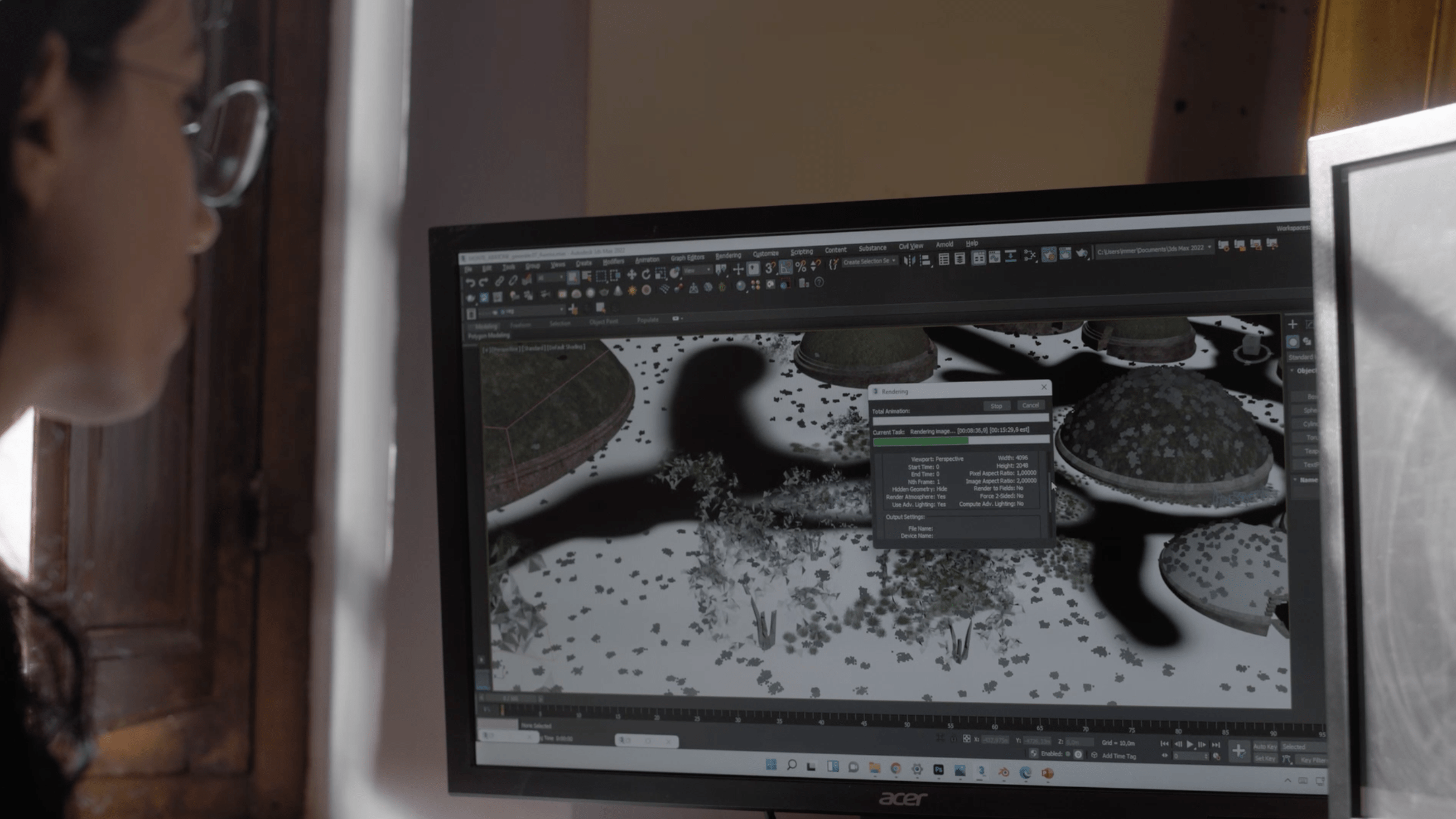
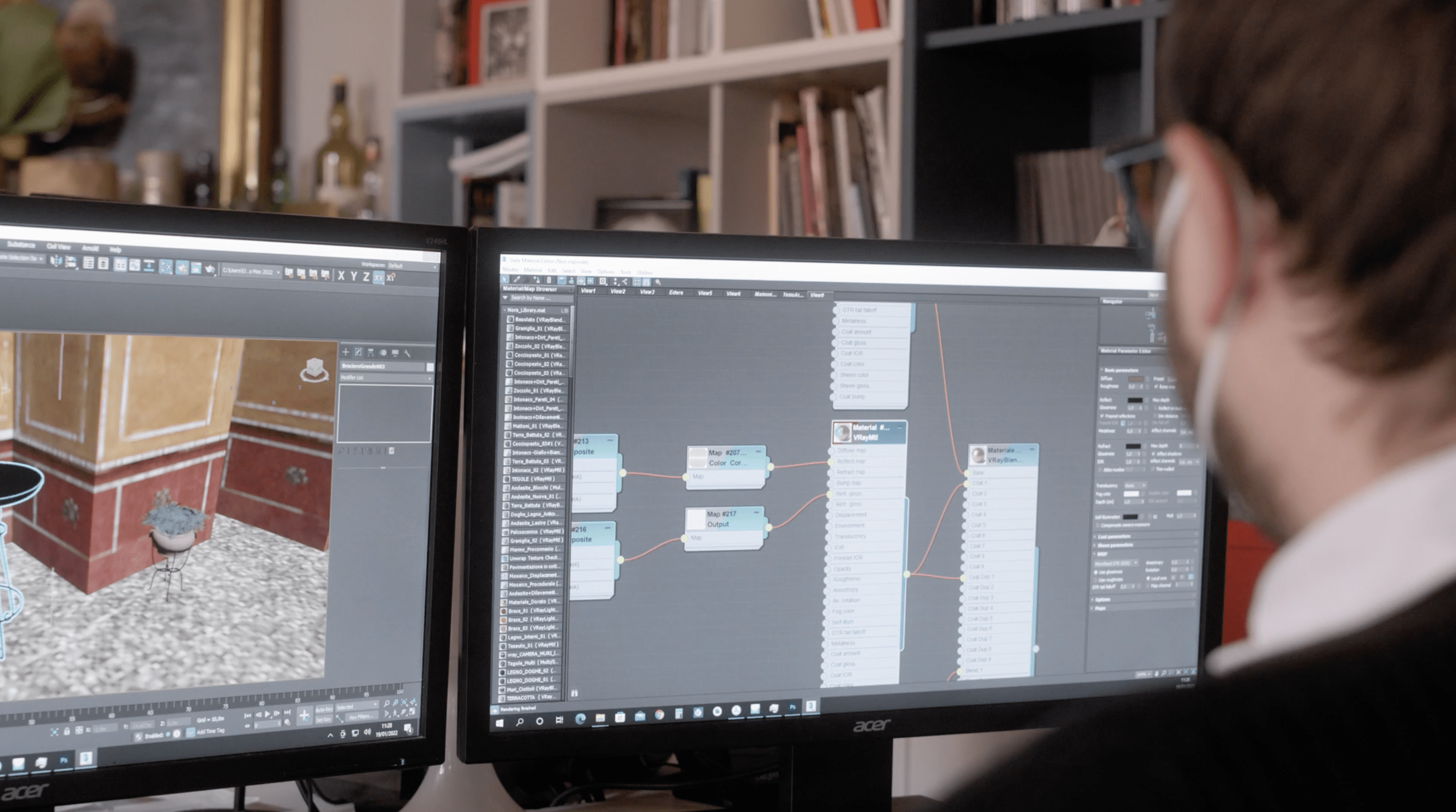
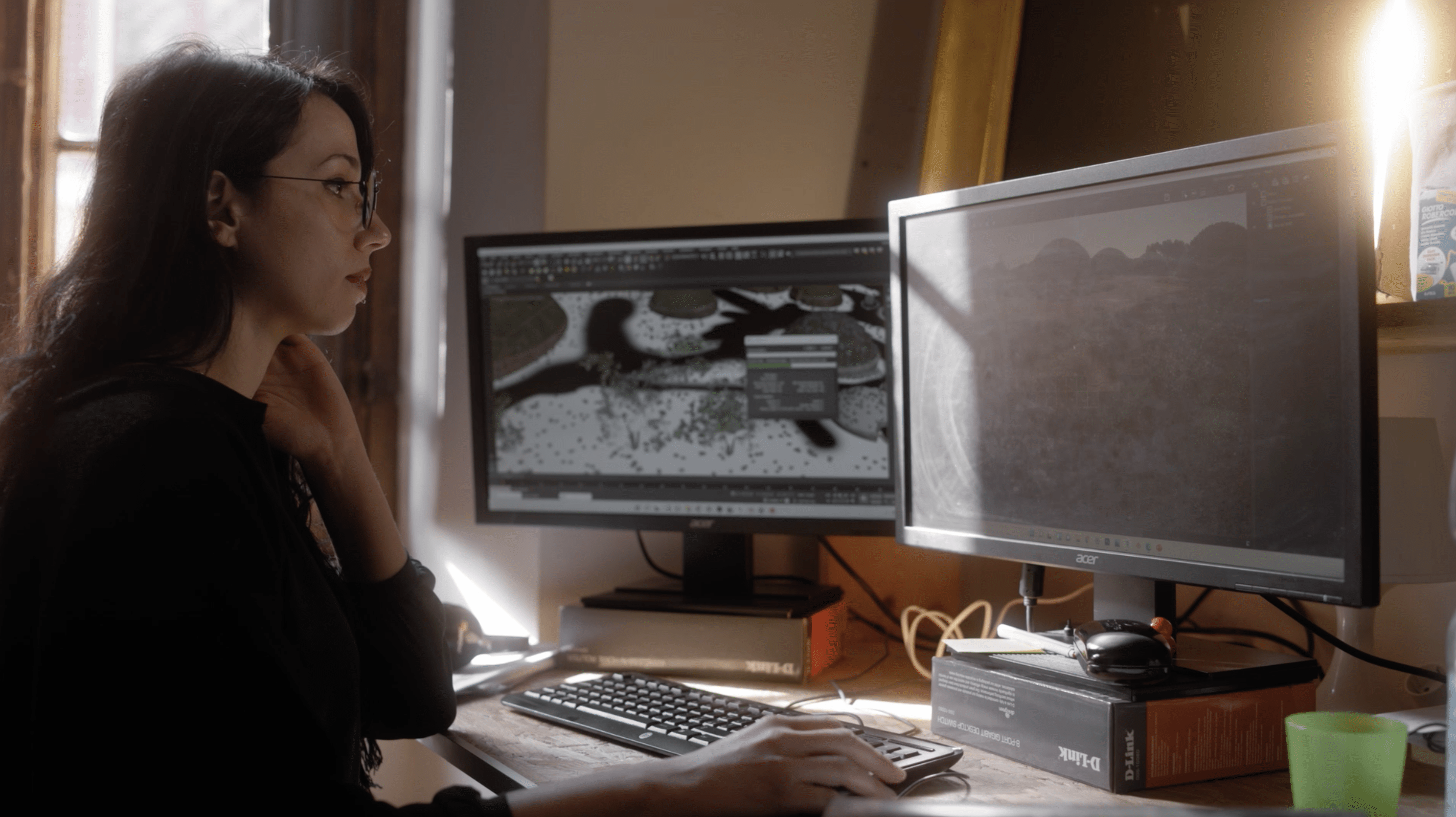
ZENODO - Open Access Portal
In order to facilitate the long-term sharing and storage of the data sets produced during the e-Archeo project, all scientific and reconstructive material has been made available on the Zenodo platform, and it is available to the international community under @CreativeCommons licenses.
e-Archeo complies with the F.A.I.R. principles regarding the free publicity and circulation of scientific data (availability, accessibility, interoperability and reusability of scientific data).

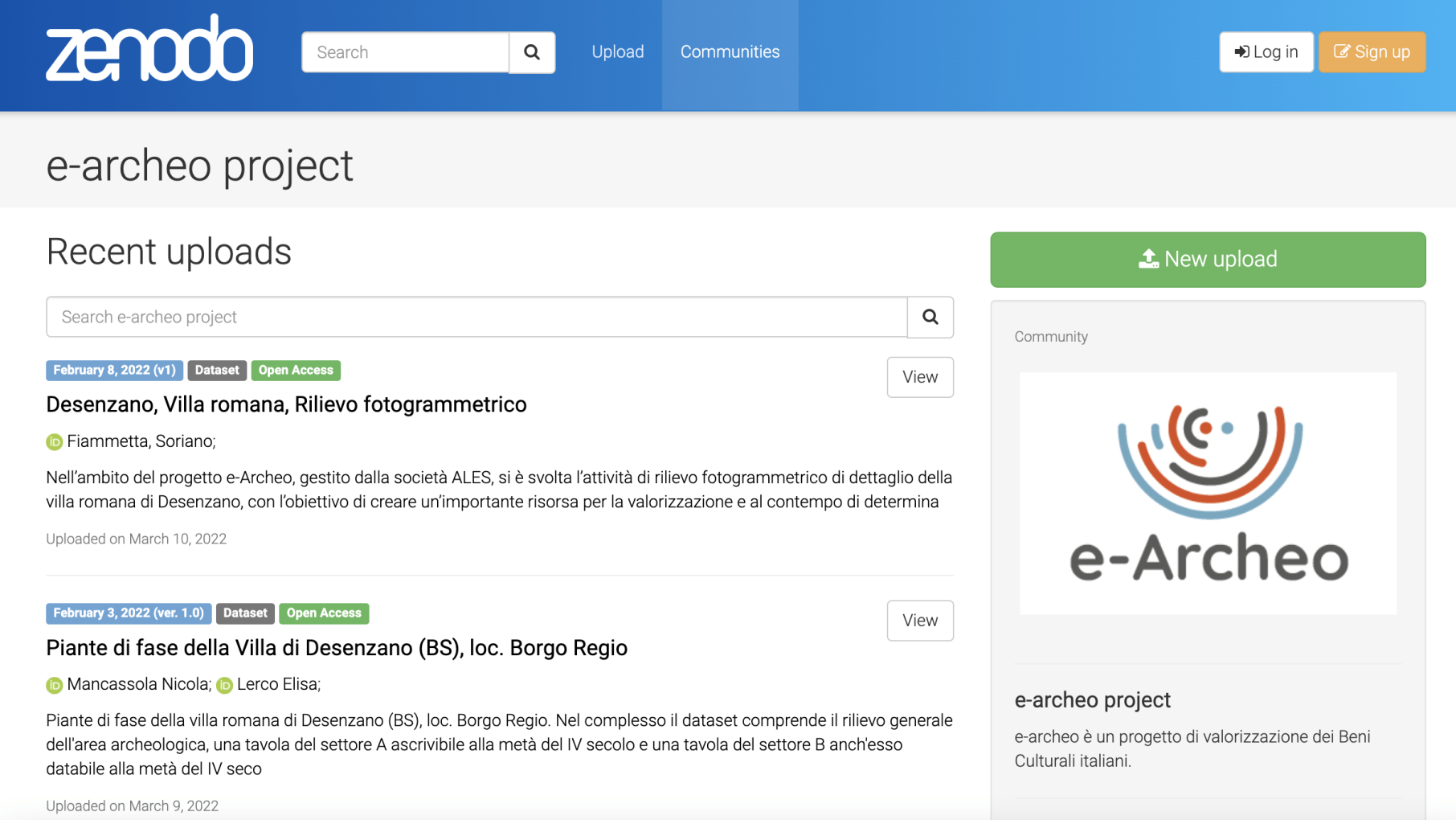

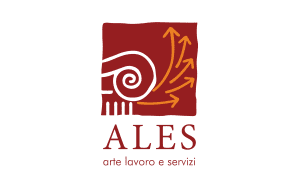
ALES-MIC © 2022, Ales S.p.A. – P.IVA 05656701009. All Rights Reserved. Powered by BLACKOUT® AGENCY

